Will 2013 be a good year for the natural products industry? And, how will 2012’s hottest issues like GMOs affect the new year from a business standpoint? In this feature, WholeFoods goes right to the source via interviews with raw materials suppliers to bring you insight into key areas we should have our eyes on in the coming year. These companies are often at the forefront of innovation, often playing with new ingredients and combinations years before we see them on the market. Their knowledge of industry trends is something from which we can all benefit.
GMOs: Fad Today or Here to Stay?
Last month, WholeFoods reported that sales of Non-GMO Project Verified products comprised a whopping $2.4 billion in the 52 weeks ending September 29, 2012 (according to SPINS). This marks a 66% increase since 2011. A contributing factor to this rise was that genetically modified organisms 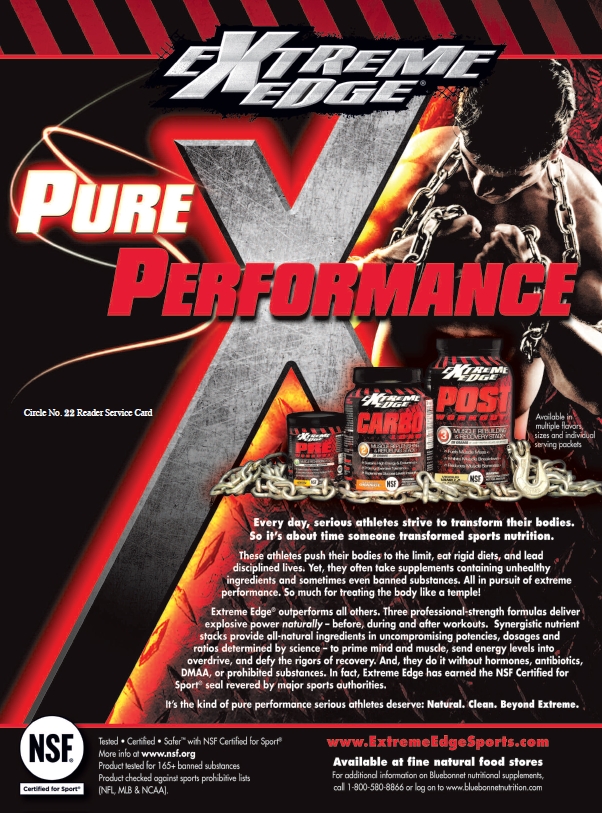 (GMOs) stole headlines in 2012 with California’s Prop 37 on the table and class action lawsuits against “natural” products that may contain GMOs.
(GMOs) stole headlines in 2012 with California’s Prop 37 on the table and class action lawsuits against “natural” products that may contain GMOs.
“Since consumers of health foods and supplements tend to be health-savvy, they are very concerned about the way the ingredients in those products are grown and sourced,” states Mitch Skop, senior director of new product development, Pharmachem Laboratories Inc., Kearny, NJ.
GMOs are definitely on the list of ingredients to avoid. The reasons why are plentiful, but one of the most compelling is that there’s little longitudinal evidence proving their safety. States Gunny Sodhi, marketing manager for Ayush Herbs, Redmond, WA, “There’s more research coming out that indicates GMOs are not good in the long term. They’ve been linked to negative health effects. In Ayurveda, it is believed that the healthiest food comes from nature and any modification we do is just not good for us.”
As consumer interest in non-GMO products rises, raw materials suppliers are feeling the push from their clients. States Scott Steil, president of Nutra Bridge, Shoreview, MN, “We have seen an increase in the number of supplement customers asking for non-GMO certificates in the past few months, so it is an important aspect of our business.”
The trend isn’t just that customers want GMO-free ingredients; they want documentation of GMO-free ingredients, states Steve Siegel, vice president of Ecuadorian Rainforest, Belleville, NJ. Of interest, Jeffrey Lind, vice president of the health business unit at Frutarom USA, North Bergen, NJ, raises the point that GMO versus non-GMO isn’t just important to food and supplement makers. More and more, it’s also being raised with all ingredients, including personal care.
Shaheen Majeed, marketing director for Sabinsa Corp., East Windsor, NJ, feels this interest in documented non-GMO goods underscores U.S. shoppers’ increased desire for non-GMO products. In addition, states Majeed, “The final destination of the finished product may be in a country where GMO foods/supplements are currently banned.” This is a good point; even if products with GMOs are still sold readily in the United States, that’s certainly not the case everywhere. And, suppliers must meet the needs of anyone that exports products.
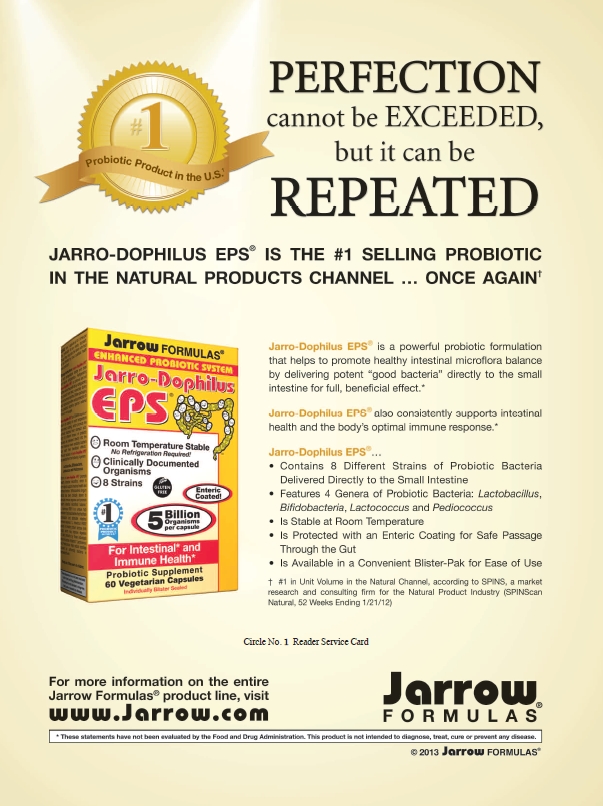 Likewise, ingredients suppliers based in countries where GMOs are banned have a history of offering ingredients free of genetically engineered components. “As Frutarom manufactures in Switzerland and sells a significant percentage of global sales in Europe, in consideration that Europe has some of the most stringent GMO regulations in the world, it’s an absolute no-go for the company,” says Lind.
Likewise, ingredients suppliers based in countries where GMOs are banned have a history of offering ingredients free of genetically engineered components. “As Frutarom manufactures in Switzerland and sells a significant percentage of global sales in Europe, in consideration that Europe has some of the most stringent GMO regulations in the world, it’s an absolute no-go for the company,” says Lind.
Indeed, it’s noteworthy that several of the companies interviewed for this piece currently offer (and have sold for years) non-GMO ingredients. P.L. Thomas of Morristown, NJ, for instance was the first company to sell non-GMO soy isoflavones, beginning over a decade ago in 1999/2000, according to Mary Hiner, director of food/beverage business development at P.L. Thomas & Co., Inc. She adds that her company has seen increased demand for organic ingredients, which could also be related to the non-GMO movement. Of course, buying organic is one of the few ways shoppers can ensure they are buying a product not intentionally made with GMOs.
In agreement with the non-GMO and organic trend is Andres Sena, chief business officer at Powder Pure, Orem, UT, who feels that momentum for these markets has especially grown in the past two years (encouraging his company to make about 70% of its offerings organic). “Consumers and therefore businesses seem willing and able to pay a higher rate for organic products, whether for food, supplements or personal care,” Sena states.
While still a concern of customers, Paul Faganel, president of Embria Health Sciences, Ankeny, IA, feels that interest in organic has leveled off from what it was about seven years ago. He feels that this could be due to less coverage of “Franken Foods” in the media, and also confusion about the difference between non-GMO and organic. “For example, it is possible when someone hears EpiCor is non-GMO they assume that means organic as well,” states Faganel. “Therefore, we may not get the organic question. Either way we have seen a decrease in the organic status question.”
Another way of ensuring a GMO-free product is concentrating on wild-harvested and -crafted herbs. Says Sodhi, “We don’t do any modification to the herbs. We pick them and we sell them as nature makes them—literally.” The only modification is during extraction, which is a normal, accepted process. He adds that developing a wild-crafted product requires truly knowing where the herbs come from. “They really have to grow away from any environmental toxins like pollution, herbicides, pesticides and insecticides.” Though the firm grows the majority of its own herbs, Sodhi adds that Ayush has a “very strenuous process” that qualifies growers and materials before the company will work with them.
Being a dedicated non-GMO, wild-crafte d and/or organic ingredient supplier has meant increased inquiries from new customers. Nutra Bridge, for instance, says that 2012 was its best year to date, with Steil attributing the success in part to its completely non-GMO inventory.
d and/or organic ingredient supplier has meant increased inquiries from new customers. Nutra Bridge, for instance, says that 2012 was its best year to date, with Steil attributing the success in part to its completely non-GMO inventory.
This sends an important message to raw materials suppliers and finished products makers alike: don’t get left in the dust by assuming the non-GMO movement is a fad that doesn’t warrant attention. The more non-GMO ingredients and products your firm can offer, the more trustworthy and responsible you will be to your customers.
“There has been interest in healthy ingredients and we are committed to providing the safest, high-quality products available,” says Kathy Lund, vice president of business development and marketing at AIDP, Inc., City of Industry, CA.
In the end, Bob Green, president of Nutratech, Inc., West Caldwell, NJ, feels interest in non-GMO is all about demanding consistent, reliable quality. “It’s a movement that our industry must pay attention to because it’s really about transparency in labeling: 100% disclosure of the ingredients in any product, including dietary supplements.”
Will 2013 Ingredient Prices Weather the Storm?
From floods to droughts, Mother Nature had a thing or two to throw our way in 2012. Could this affect ingredients supply in 2013? Possibly, say some; probably, say others.
“Fluctuations in weather, even small ones, can impact the growth of crops significantly, as well as the price,” states Lind. “The degree of changes in price is yet to be fully realized, however I believe there to be increases on the horizon for 2013.”
Steve Holtby, president and CEO of Soft Gel Technologies, Inc., Los Angeles, CA, explains how shifting weather patterns affect the supply chain. “Botanical yields are smaller, which drives up price. The principles of supply and demand are at work here. There are always climate variables, including natural disasters, which pose a threat to the availability of medicinal plants,” he states.
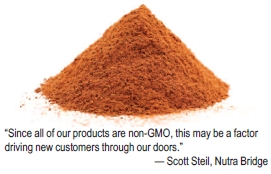 Unfortunately, we’ve had more than our fair share of these variations lately. “Adverse weather affects pricing and availability of raw materials every year, but the last couple years have been particularly bad,” Sena believes.
Unfortunately, we’ve had more than our fair share of these variations lately. “Adverse weather affects pricing and availability of raw materials every year, but the last couple years have been particularly bad,” Sena believes.
Changes don’t apply across the board, though, as each growing region has its own set of problems and advantages. “Extreme weather may have a positive, negative or neutral impact on raw material availability, and each specific situation must therefore be looked at,” states Paul Flowerman, president of P.L. Thomas & Co., Inc. He says the heavy monsoons were good news for most Indian botanicals, as were the summer rains in the Sahelian belt in Africa (where gum Arabic, hibiscus, senna and sesame are sourced). “This bodes very well for the potential size of the cultivated and wild-crafted crops from these regions, but other factors—notably market prices and socio-political issues—must be watched for their impact on the harvest or collection,” Flowerman says.
Sena adds that extreme weather has affected acai in Brazil, algae in Oregon and cherries in Michigan. Unfortunately, we don’t always have a quick recovery. “One bad year affects the entire supply chain for years—not just one,” Sena states.
Siegel says annual weather changes can be felt in the cranberry market, for instance. “With rising temperatures, cranberry harvests are being affected. It is said that by the end of the century, the average temperatures will increase 3.5 degrees or more!” he says.
The Arctic Ocean, particularly where krill are  fished, has faced its own set of issues. According to Becky Wright, communications and marketing manager for Aker BioMarine Antarctic US, Issaquah, WA, 2012 saw a significant physical change in the region: substantial free-floating ice in the water. These conditions, Wright explains, “significantly impeded traditional trawlers with nets that pull the catch on deck.” She adds, “Realizing that they were catching ice and not krill, many harvesters abandoned their efforts.”
fished, has faced its own set of issues. According to Becky Wright, communications and marketing manager for Aker BioMarine Antarctic US, Issaquah, WA, 2012 saw a significant physical change in the region: substantial free-floating ice in the water. These conditions, Wright explains, “significantly impeded traditional trawlers with nets that pull the catch on deck.” She adds, “Realizing that they were catching ice and not krill, many harvesters abandoned their efforts.”
In the end, 2012 had a smaller krill harvest for the second straight year, as tracked by the Commission for the Conservation of Antarctic Marine Living Resources (CCAMLR).
But it’s not all doom and gloom. First, many ingredients don’t feel the impact of Mother Nature’s curve balls, states Faganel. “Fortunately for us, EpiCor is not directly impacted by these price increase,” he states. “EpiCor is a microbial fermentation that uses ingredients sourced in the Americas which has a stable and reliable supply chain.”
Of course, there are several ingredients that are weather dependent. Nonetheless, Lund feels that pricing won’t vary too much, since numbers are mostly determined by demand and market needs. As an example, she says, “Corn is currently in shortage, but the price is only slightly higher.”
Other companies are shielding customers as much as possible from changes in prices. States Paul Dijkstra, CEO of InterHealth Nutraceuticals, Inc., Benicia, CA, “We are expecting to see a moderate increase in raw materials prices over the next 12 months driven by weather conditions that promote less-than-optimal growing conditions for our natural ingredients. We have worked very diligently on cost controls and absorbed many increases in order not to burden our valued customers.”
 Meanwhile at Aker BioMarine Antarctic, in spite of all the trouble with ice, the company managed to secure a large portion of the 2012 catch, “putting us in an ideal supply position for 2013 and beyond,” states Wright. Thus, the firm doesn’t expect customers will see a price hike as a result of 2012’s fishing issues.
Meanwhile at Aker BioMarine Antarctic, in spite of all the trouble with ice, the company managed to secure a large portion of the 2012 catch, “putting us in an ideal supply position for 2013 and beyond,” states Wright. Thus, the firm doesn’t expect customers will see a price hike as a result of 2012’s fishing issues.
Remember, many suppliers aren’t spring chickens; they’ve experienced weather-related ups and downs before and have plans in place to deal with weather variability.
For this reason, Majeed notes that his company diversifies its growing regions. He states, “Sabinsa has cultivation programs in several different countries to produce high-quality raw materials for some of our products.”
Likewise at Ayush, the firm takes advantage of growing cycles to avoid supply issues. “Crops and herbs are seasonal, and we know the season in which the picking or the potency will be the best. So, we tend to stock during those seasons and store it under appropriate conditions in our facility. Even if a drought or a flood comes, or it’s too cold or too hot to be favorable for growth, we can overcome that,” states Sodhi.
In the end though, extreme weather patterns are something we should all keep an eye on, as it could affect our businesses and our personal lives. States Majeed, “As the weather becomes more variable, which it clearly is, the broader industry will need to be more aware of how weather impacts quality and price of the end products.”
Tech Check
 Keeping up with the times often means improving old processes and investigating new options at all stages of manufacturing.
Keeping up with the times often means improving old processes and investigating new options at all stages of manufacturing.
Drying. One area some companies are exploring is improving the drying of raw materials. The aim of any processing method is not to sacrifice color, flavor, flowability, stability, density or nutritional make-up. Majeed outlines some traditional drying techniques:
• Vacuum tray driers can handle large volumes and paste-like materials, but have trouble with uniform heating.
• Fluid bed driers offer uniform drying, even at room temperature. But, the technique is only suitable for granular materials.
• Spray driers can turn aqueous solutions or temperature-sensitive items into free-flowing powders. But, only water-based solutions can be dried.
• Rotacone driers are fast, offer uniform temperature and can be used with a vacuum. But, it is only recommended for granular materials.
These tried-and-true methods work well, and aren’t going to be extinct any time soon. But, there’s always room for improvement. Sid Hulse, manager of new product development at P.L. Thomas & Co., says newer technologies strive to “improve the natural components of the raw material that remain in the powder so it is closer to the nutritional and/or olfactory profile of the raw material that is being dried.” This means the end product will stay true to its original color, flavor and nutrient composition.
The caveat, says Hulse, is that new technologies sometimes push up the price of finished powders. And then, the cost/benefit balance of the new technology must be weighed. “The more costly the powder, the greater the comparative nutritional/olfactory benefit must be. With some of the new technologies, this cost/nutrient profile does not seem to apply. The new technologies that can accomplish this have a greater opportunity to take business from the older technologies.”
One newer technology involves infrared, “which is by far more advantageous than traditional technologies in terms of cost, quality and sustainability,” says Sena. The technology targets and evaporates water molecules without affecting the active enzymes, antioxidants, vitamins or minerals in the original material. According to Powder Pure, “Within minutes, freshly picked produce becomes a fine powder that retains 100% nutrition, as well as full flavor, aroma and color.”
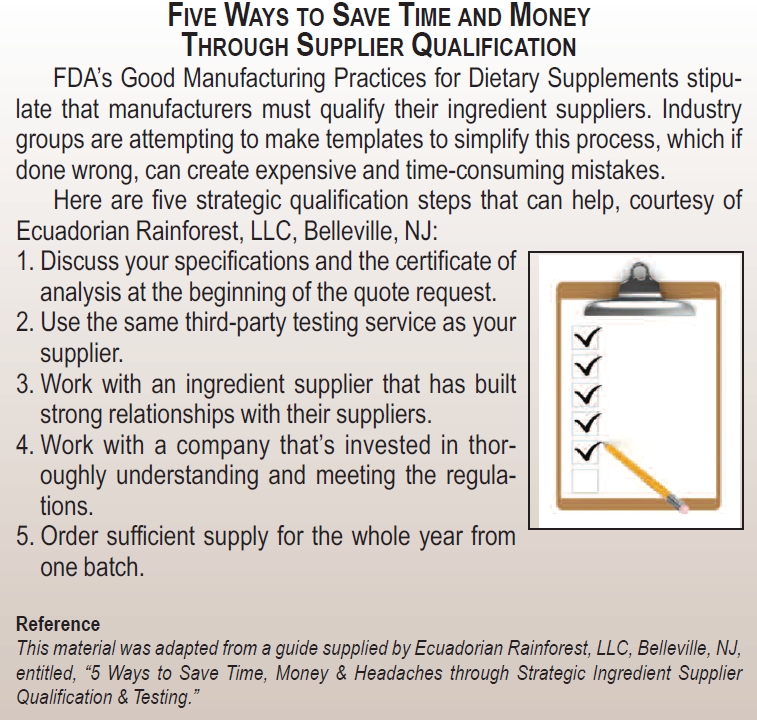 Also new to the market is a proprietary commercial dehydration platform for the food and pharmaceutical sectors from EnWave, Vancouver, BC, Canada. The radiant energy vacuum (REV) technology, says the company, “offers better quality than air or spray drying with flexible, efficient processing suitable for sensitive food products and biomaterials.” By using microwaves in a vacuum environment at low temperatures (above or below freezing), it is said to retain high levels of nutrients, color and flavor in fruits, vegetables, probiotics, herbs, meats and other materials. As an added bonus, the technology is said to work in less time and using less energy than traditional drying techniques.
Also new to the market is a proprietary commercial dehydration platform for the food and pharmaceutical sectors from EnWave, Vancouver, BC, Canada. The radiant energy vacuum (REV) technology, says the company, “offers better quality than air or spray drying with flexible, efficient processing suitable for sensitive food products and biomaterials.” By using microwaves in a vacuum environment at low temperatures (above or below freezing), it is said to retain high levels of nutrients, color and flavor in fruits, vegetables, probiotics, herbs, meats and other materials. As an added bonus, the technology is said to work in less time and using less energy than traditional drying techniques.
Having the best drying technology was so important to Embria Health Sciences that it made it a priority when it designed its new production facility in 2006. States Faganel, “Embria was far ahead of the industry when it selected a unique proprietary drying technology to ensure the active ingredients in EpiCor are preserved.” Because of this technology and expertise, other companies have even approached Embria to contract with them for product drying so as to better retain color, odor and bioactive integrity in their raw materials. “This includes products that could not be dried with the other conventional methods. Companies have been amazed at how much better their products become when dried using our process,” states Faganel, noting that acai is an ingredient for which the company is able to improve the quality and reduce the cost.
Identity. In raw materials, you have to know the white powder just delivered in that drum is exactly what the label says it is. We know companies have been burned in the past by unscrupulous or careless suppliers, so purity and quality are top concerns in the supplement industry.
Green says this issue deserves serious 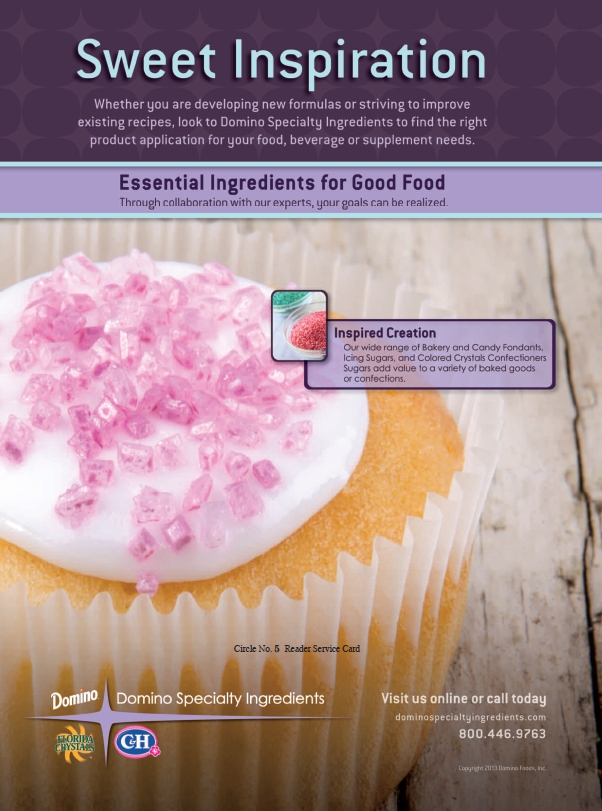 attention. “Once a raw material has been made into an extract, there is not a rugged, reliable, validated method for verifying the ingredient’s genus and species. In fact, we are working proactively with industry leaders to figure out a testing or analytical solution to this problem,” he states.
attention. “Once a raw material has been made into an extract, there is not a rugged, reliable, validated method for verifying the ingredient’s genus and species. In fact, we are working proactively with industry leaders to figure out a testing or analytical solution to this problem,” he states.
His company, and others interviewed here, feels an important factor in ensuring quality is making long-term partnerships with trustworthy growers and suppliers. The firm also has stringent and proprietary harvesting and manufacturing methods that capture and preserve the optimal amount of material for use in its ingredients. “[It] ensures consistent ingredient quality and guarantees standardized amounts of p-synephrine in every batch. We have strict checks and balances in place to confirm this for every batch,” states Green.
Once a powder is in the building, suppliers are also using interesting, newer identity testing and analytical methods to ensure quality. One such method noted by Dijkstra is ultra high-performance liquid chromatography (ultra HPLC). This separation method uses smaller columns and particles than HPLC to quantify and recognize components during identity testing, which means better efficiency. “Ultra HPLC has higher sensitivity, faster run time and greater resolution versus HPLC,” states Dijkstra.
Another technique in use at Powder Pure is polymerase chain reaction (PCR). Unfortunately, the firm has seen attempts by other suppliers to spike “pure” powders with maltodextrin or synthetic materials. To catch any potential unwanted substances, chief science officer Kerry Ringer says her firm uses PCR during identity testing, which amplifies DNA probes unique to each plant. “We test most frequently by quantifying the vitamins, minerals and other compounds in the plant to see if they match the expected content. If they do, we can be confident that nothing has been added (e.g., maltodextrin),” states Ringer.
At Frutarom, a technique used to process its raw materials in Switzerland, is now coming to the United States for the first time. Lind says the firm’s eco-friendly HyperPure technology separates the lipid compounds in a raw material through a cross-flow filtration system. “As lipid compounds may harbor contaminants and significantly contribute to ingredient stability, HyperPure presents a safe, novel way to produce botanical ingredients,” he states.
 NattoPharma ASA of Oslo, Norway has gone to great lengths to ensure the purity of its branded menaquinone-7 (MK-7, MenaQ7), says Vladimir Badmaev, M.D., Ph.D., head of R&D. In the case of MK-7, this meant the final material didn’t include any menaquinones (like 4, 5 or 8) besides high-purity menaquinone-7 in a crystallized form.
NattoPharma ASA of Oslo, Norway has gone to great lengths to ensure the purity of its branded menaquinone-7 (MK-7, MenaQ7), says Vladimir Badmaev, M.D., Ph.D., head of R&D. In the case of MK-7, this meant the final material didn’t include any menaquinones (like 4, 5 or 8) besides high-purity menaquinone-7 in a crystallized form.
The crystal form, states Badmaev, “is synonymous with purity and quality.” The reason why, he feels, is this form best represents the mineral so that it’s most helpful in the body. “Vitamin K2 can be purified to form a crystal structure in which the component molecules are present in an ordered array or lattice. The crystal form of vitamins like vitamin MK-7 is increasingly in high demand because of its purity, biological bioavailability and predictability of biological action,” he believes. This means better gastrointestinal absorption, tissue bioavailability and safety and efficacy.
In a nutshell, the patented technique involves fermenting B. licheniformis and chickpea flour using dextrin as carbon and nitrogen sources. The menaquinone in the fermentation broth is spray dried and extracted with vegetable oil before it is purified, concentrated and crystallized.
But, Lund says that most analytical testing methods are well established in the research world, so the name of the game isn’t just innovation; it’s using such technology properly. “The challenge is to use the correct method for the specific product to be tested. Pre-treatment is as important as the method itself. Every method has its limitation. Sometimes, more than one method should be used. Testing methods for routine QC tests versus specific identity tests would have different priorities,” she explains.
Faganel is in agreement, noting that while his company uses cutting-edge Fourier transform–near-infrared (FT-NIR) spectroscopy, it’s just a tool. “It’s not enough to just buy a machine; it takes considerable understanding of the equipment and experience to understand its application for specific materials,” he explains. The knowledge has paid off: Embria’s use of FT-NIR includes validation, something FDA found important when it acknowledged EpiCor’s new dietary ingredient notification and the technology has helped customers comply with GMP identity testing and qualification in a cost-effective way.
Standardization is also key for ensuring quality. In 2011, Biothera, Eagan, MN, partnered with the U.S. Pharmacopeia (USP) to create an official monograph for beta glucan from bakers yeast (Saccharomyces Cerevisiae). The monograph (published in Food Chemicals Codex) included a new assay for determining the beta glucan content of raw ingredients as well as finished foods, beverages and supplements, states CEO Richard Mueller.
“Previously, there was no standard or accurate analytical 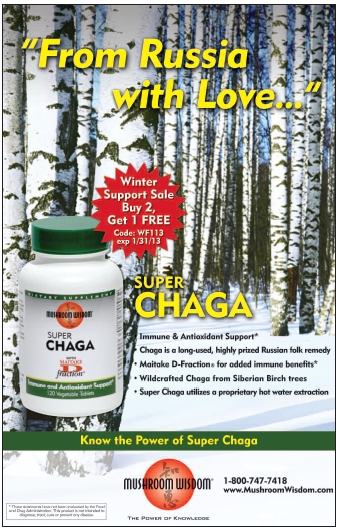 method [for beta glucan from bakers yeast],” says Mueller. Helping to develop the monograph was important to the company because “as industry awareness of GMP’s heighten, it is critically important to identify and quantify accurately the active ingredient in every ingredient used in finished products,” states Mueller. “Manufacturers should be especially careful of ingredients that do not have identified or quantified active ingredients.”
method [for beta glucan from bakers yeast],” says Mueller. Helping to develop the monograph was important to the company because “as industry awareness of GMP’s heighten, it is critically important to identify and quantify accurately the active ingredient in every ingredient used in finished products,” states Mueller. “Manufacturers should be especially careful of ingredients that do not have identified or quantified active ingredients.”
Number Theory
It’s doubtful that 2013 will see a diminishing of the attacks on nutritional products that we saw in 2012…and 2011…and 2010….
There will always be people that don’t like seeing supplements (with a history of working very well) on the market, but we don’t have to take the negative publicity lying down. Fighting such attacks with cold, hard facts is one of the best approaches, and developers of raw materials are some of the most important leaders in nutrition research.
“Claims need to be aggressive in order to sell product, but the science needs to be present to back them up. If not, the clock has started ticking before your day in court,” says Steil.
But, not all research is created equal, and good planning is essential for coming up with compelling results. “Solid research design is first and foremost,” says Barbara Davis, director of medical and scientific affairs at P.L. Thomas & Co, Inc. “Developing a research plan that incorporates safety assessment, pre-clinical and clinical work to identify the safety of the ingredient, mechanism of action, claims of interest, efficacious doses and appropriate study populations is critical. Upfront consideration of science, claims, regulatory, branding and marketing maximizes chances of a successful opportunity.”
Lund says the studies should be conducted by qualified professionals, and her firm handpicks experts in the field.
Joosang Park, vice president of scientific affairs at BioCell Technology, LLC, Newport Beach, CA, agrees, noting, “It takes a significant amount of resources and skills to run a successful trial. It is emphasized that the studies be well-designed to ensure publication of the data in a peer-reviewed journal. Our research over the decade produced scientifically competent and reliable datasets on the safety and positive effect of BioCell Collagen on various connective tissues such as joints and skin dermis, leading to three publications in peer-reviewed journals.”
He and several others feel a well-designed study meeting the standards of a peer-reviewed journal will include sound methods (like randomized, placebo-controlled studies), correct study populations and sample size, interesting and significant findings and ensuring safety, for starters.
Dijkstra adds that “elucidation of the mechanism of action to help explain the observed efficacy,” is also an important finding to uncover.
Similarly, Mueller says his company strives to understand all aspects of its ingredient through research. He states, “We look at both physical and psychological measures of health, such as incidence of upper respiratory tract infection symptoms and participants’ level of vigor, fatigue and overall sense of well-being. This combination of stress factors and physical and psychological measurements results in broader product claims opportunities—those that go beyond simply stating Wellmune WGP supports healthy immune function.”
Having strong research is one reason why Green says his company’s branded ingredient (Advantra Z) has continued to experience double-digit growth. “More and more manufacturers and retailers are requesting branded ingredients like Advantra Z that are backed by research and have stood test of time,” he states. “Featuring branded ingredients like Advantra Z that provide total transparency is one way manufacturers and retailers can offer that level of consumer confidence.”
In the end, most companies represented in this article believe that the cost and effort required to run a good clinical trial are worth it. “There’s really never a substitute for quality clinical science,” says Lind. “Cutting corners in research to support your claim in a preliminary fashion will land you with hard questions from customers interested in working with quality materials.”
On the Horizon
Which health and wellness trends could affect our industry in 2013? Here’s what raw materials suppliers had to say:
• Sodhi feels that gluten-free, vegan, dairy-free, food-based ingredients will see increased demand.
• Krill sales have grown enormously in the past few years, and we could see the trend continue in 2013, says Wright. “A consumer study sponsored by Aker showed that nearly four out of 10 supplement users are looking for an omega-3 source other than fish oil,” she says, noting that krill could meet this need.
• Majeed says, “2013 will be the year curcumin breaks into the mainstream in a big way.” He feels his company’s branded form (C3 Complex) could make a big impact because it is supported by a large amount of science.
• Brain health items will continue to be strong performers, says Lund, noting that with research pending on her firm’s branded ingredient (Magtein), it “will prove to be the one to watch in 2013.” For similar reasons, an ingredient for bone strength and flexibility (KoACT) will “help invigorate the women’s lifestyle sports market,” she states. Also among brain healthy ingredients, omegas, PS and natural berries could be influencers.
• Joint health products that offer comprehensive support for joints, skin and other connective tissues, says Park, will be key market players. “Our recent research implicates BioCell Collagen for the structural integrity of ligaments and tendons as its ingestion caused increase in collagen type I, a predominant structural component of these connective tissues as well as of skin dermis,” he states. Holtby agrees with joint health, noting that part of the need for these products is tied to the problems with mainstream alternatives. He states, “With the prevalence of chronic joint pain and the dangers presented by pharmaceutical drugs, sales of joint health supplements have recently soared.”
• Siegel cites natural sports nutrition. “With the fall of Lance Armstrong, athletes are looking for natural methods to enhance performance,” he states. Skop adds, “We may see some outstanding strides in energy supplements, notably because many ‘high-powered’ energy drinks are gaining a lot of negative press and resulting in consumer hesitance to consume them.” And, weight loss will likely continue to perform well, with Steil citing 7-Keto, CLA and green coffee bean as key ingredients in this area.
• Also on the list are heart-support products (like fish oil, plant sterols and vitamin K) and blood sugar-support products (like chromium, fiber, InSea2), says Steil.
• “A big wellness trend I see is mood. We are all so busy and stressed,” says Davis, predicting that ingredients that have calming, relaxing or stress-reducing properties “are sure to be hits.”
• Mueller believes immune health will continue to be strong. He states, “The November 2012 issue of the Journal of the American Medical Association reported on a study that found that immune health was one of the top three reasons people took supplements in the past two years.” Additional applications for ingredients may pique formulators’ interest. “We are currently working with major food and beverage companies on developing immune health products that span a wide range of product applications,” he states.
• Last, Skop pinpoints two trends we may see play a role in many of these areas: “We believe we will still see new exotic fruit derivations, mainly touted for antioxidant value, and more probiotic strains that have condition-specific applications.” WF
Published in WholeFoods Magazine, January 2012










